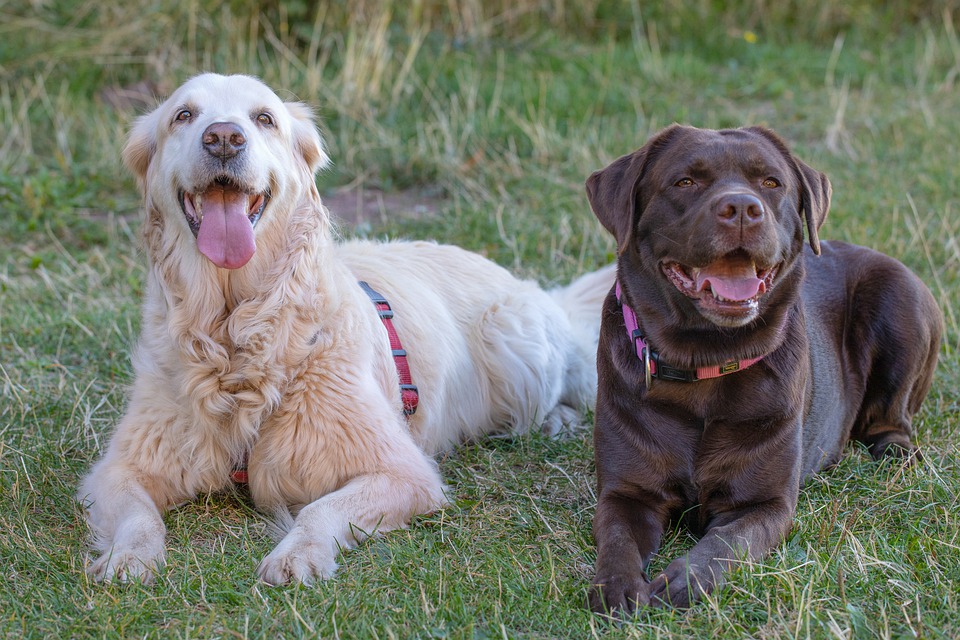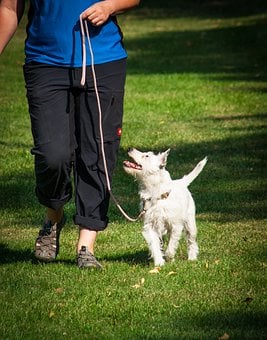by Zan Raynor, certified dog trainer and CEO of ELLAS Animals INC
Game of Chance
There are a lot of factors to take into consideration when selecting a service dog candidate. There’s no mathematical formula that calculates the statistics and guarantees a successful service dog. It’s definitely a game of chance. However, it’s not like casino gambling where the house always wins. It’s more like calculated risks taken on by entrepreneurs and investors.

Calculated Risk
You’re investing a lot of time and money into this endeavor, but the benefits of succeeding (the freedom and accessibility that come from a service dog effectively mitigating your disability) outweigh the risks of failure. You’ve heard the statistics, that typically about 20% of rescue dogs trained by amateur trainers make it all the way to service dog (which incidentally is about the same as the percentage of new restaurants that survive the first critical five years), so you’re doing your research and learning ways in which you can increase those odds and make it more likely that your endeavor will succeed than fail.
There are a lot of things you can do along the way to maximize your likelihood of success, and so many variables that can make or break a service dog and may be beyond your control like negative dog-life experiences, but you need to set yourself up for success (and minimize the risks) upfront by selecting a service dog candidate with the best calculated risk.

Breed
We’ll start where everyone starts: breed. Various dog breeds have been developed deliberately to increase particular traits so it’s important not to disregard general tendencies of a breed. The service dog community often touts the wisdom of sticking with one of the “Fab Four” breeds: Labrador retrievers, golden retrievers, poodles, and collies. After that, they’ll fight to the death defending the honor of their particular favorite breed and why it’s the best (or at least a perfectly good) option to train as a service dog. The next round of debate (or bloody battle) will center on purebred versus mixed breed dogs, with each side convinced there is only one correct option.
Bloodline
Genetic traits in dog breeds are a real thing, but so are genetic traits in breed lines. In other words, the family and ancestors your dog comes from are as important as their breed. These considerations include personality and temperament traits as well as physical and athletic traits as well as health and longevity. This is why it’s important to vet a breeder if you decide to invest the money in a purebred dog. You want to avoid backyard breeders and puppy mills, not just because they’re unethical but also because they tend to void the risk reducing reasons you decided to invest in one of the breeds in the first place.
Balancing Risk and Investment when Selecting a Service Dog Candidate
Some high end service dog training programs breed their own dogs from proven bloodlines. This, paired with professionally trained, highly experienced, and exclusively dedicated dog trainers and state of the art training facilities, can increase the statistical chance of developing a dog into a service dog to 50%. The bottom line, though, is that many people who could benefit from a service dog don’t have the money to invest in a purebred dog from a reputable breeder (or to hire an exclusively priced trainer) and so they need to accept a higher risk of failure in exchange for a lower investment of cash when selecting a service dog candidate.
Individual Temperament vs Breed when Selecting a Service Dog Candidate
Some experts estimate that only 1% of all dogs have the capacity to become successful service dogs. That means, regardless of breed or bloodline, you’re looking for a unicorn, or something that is so statistically unlikely that it is considered one-of-a-kind. Certain breeds will have more than 1 in 100 dogs that are suitable for service work, as will reputable breeders of service dog candidates. However, when it comes down to it, regardless of which breed or breeder you’ve chosen, you’re looking at a dog’s individual temperament and health to maximize your chances of success when selecting a service dog candidate.

Temperament Testing when Selecting a Service Dog Candidate
Temperament testing is a tool that can help you identify the unicorns, whether you’re searching in a stocked fishing pool (like a Fab Four breed from a reputable breeder with generations of successful service dogs) or the natural ocean (like rescues and shelters and private rehoming ads). Temperament testing can be done on puppies or adult dogs. You can pay professionals to evaluate candidates or you can learn to do it yourself. The goal of temperament testing is to find that happy medium between aggressive and fearful, between independent and hypersocial, between driven and unmotivated.

Puppy or Dog as a Service Dog Candidate?
There are robust debates regarding whether trainers should start with puppies or adolescent to adult dogs (6 months to 2 years) as service dog candidates. Puppies have an irrefutable timeline. They need to be with their mothers through 7 or 8 weeks old in order to learn bite inhibition and other important dog skills and without this valuable time, they may never develop the personality and restraint they need to reach their full potential. The next stage, between 8 and 12 weeks, is critical for socialization and a puppy should encounter every situation, sound, smell, sight, texture, etc. that they will ever need to be able to handle in that tight window or time. It’s tempting to start with a 7-8 week old puppy in order to have complete control of the enrichment opportunities to increase your odds of success and avoid the “used car syndrome” that rescue dogs can be associated with. However, puppies also have to be potty trained and have several vaccinations series over several weeks or month while they are basically on house arrest because of their health vulnerabilities. Puppies have to be taken out every couple of hours all night long. They teethe and have to be taught bite inhibition and chewing manners. They have all of the learning capacity of adult dogs but they lack the attention span and confidence so they need to proceed with their training very slowly. It will take more time and money to get to the fully trained service dog stage if you start with a puppy.
Adolescent and adult dogs may cost less and take fewer months/years to get to the fully trained service dog stage. You can also get a much better feel for their size, health, and temperament when they are fully developed, so in some ways you’re taking less of a risk with an older dog than with a puppy, who is still an unknown commodity. However, post-puppy dogs come with history and you may discover mysterious likes and dislikes, behaviors and tendencies, for years that have you scratching your head about your dog’s learning experience before you came into their world.
Testing a Puppy
The gold standard of puppy temperament testing is the Volhard test. It’s simple enough that anyone can learn how to conduct the 10 short tests and score it themselves. (We recommend recording the 10 short tests on video so you can score it later at your leisure or even ask someone else to score it also.) It’s also well documented clinically to be effective at accurately predicting the temperament that the grown dog will develop. The downside is that it is only truly accurate and predictive at precisely 49 days (7 weeks) because after that it is strongly affected by prior learning. You can still use it after that, but then you’re weakening the calculation of the risks, which is why you’re doing this in the first place. You can find the testing process and scoring instructions in many places on the internet, including this website.
Testing an Adult Candidate
It’s also possible to temperament test an adult dog. There are many approaches and testing standards, but they’re all looking for the same thing – a smart, friendly, engaged, motivated learner. You can find companies that you can pay to do formal temperament testing, like the ATTS. You can also find a great deal of information online that will help you evaluate a candidate’s temperament on your own, like this website.
Suitability for Tasks and Work
Beyond the breed’s temperament and physical characteristics, and beyond the individual dog’s temperament and health, there are other practical considerations when selecting a service dog candidate. If a dog has a suitable temperament for public access and service work, you still need to consider their suitability for the tasks and work you need, as well as logistical issues.

Size
I always recommend going with the smallest dog you can that still fits your task needs. The smaller the dog, the easier it is to take places (buses, airplanes, restaurants, etc.). They’re also cheaper (food, medications, grooming, etc.). However, some tasks require a bigger dog.
- If you’re doing mobility work, the dog needs to be at least 1/3 the height and weight of the handler (and tested by an orthopedic veterinarian at 18-24 months of age before any mobility training begins).
- If you’re doing Deep Pressure Therapy, the dog needs to be weighty enough to be effective where and how it mitigates your symptoms. (Some people need a large dog across their thighs. Some people need a medium dog on their chest. Some people need a small dog on their shoulders.)
- If you’re looking for retrieval, you need a dog whose jaws are strong enough and big enough to grasp and carry what you’re asking them to retrieve and you may need a dog that’s tall enough that you don’t need to bend down in order to accept it from the dog.
- If you’re looking for a dog to open and close doors and drawers or turn on and off the lights, you need a dog that’s tall enough to reach these things.
- If you’re looking for allergen or blood sugar detection, you may need a dog that’s small enough to carry and keep close to your face and/or the table.

Coat
You may want a specific fur length and texture for the most effective tactile stimulation. Some people want a smooth coat to pet in long strokes. Some people want a long coat with some curl to it that they can run their fingers through. Again, it’s all about what it takes to mitigate your disabilities. You may want a hypoallergenic coat or a very low-shedding coat to make it easier on your health and to be easily welcomed in more places. You may want a dog that doesn’t require much grooming (because of time, money, or energy). Depending on the climate where you live, you may want a dog that has a warm coat and can keep up all winter long or who has a short coat and is at less risk of heat stroke throughout the summer months.

Energy Level
You may want an athletic dog that can keep up with you while you jog, rock climb, or bike ride. You may need a marathon dog (slow and steady with plenty of stamina if not speed, unlike the fast sprinter who runs out of energy in the first few minutes) who can maintain your schedule outside of the house for 12 hours every day. Remember, high energy dogs need lots of exercise every day (where they are running, not walking on a leash) and you have to decide whether you can provide that or should opt for a less athletic and energetic dog.
There are other considerations depending on the tasks you need that might involve things like their nails or bark (for alerting) or muzzle length (for scent work). When selecting a service dog candidate, the practical issues for your required tasks and lifestyle are as important as finding a dog who will be able to manage public access with little to no drama.
The Process for Selecting a Service Dog Candidate
- It’s a good idea to start with what things you have trouble doing or that take up too much of your physical and emotional energy so that having a service dog would give you freedom, flexibility, and security both in and out of your home.
- Then match these to tasks or work a service dog could do to ease these burdens created by your disability.
- Then list all of the characteristics a dog would need to perform these tasks effectively.
- Then start researching breeds that might be well suited to these practical considerations as well as public access temperament in general.
- Then start researching breeders, costs, and alternative options like rescues, shelters, and personal rehoming ads. Even when you’ve narrowed it down to a particular dog, be sure to do a temperament test and get a veterinarian’s checkup to eliminate as many potential health issues as possible.
- Finally, try to negotiate a trial period, whether from a breeder or a rescue situation, of at least 3-4 weeks, in order to get to know the dog and observe them as they become more comfortable with you and your home.
Setting Yourself up for Success
Once you’ve chosen your service dog candidate and you’re on your training journey together, you’ll know it’s still a game of chance. There are so many variables in temperament and health – issues that develop later that you couldn’t have predicted. There are so many variables in training and accidents and trauma that you can’t control or entirely avoid. There are so many statistics that remind you that training a service dog is always a long shot. Nevertheless, if you’ve considered all of these different factors and taken the time to learn about breeds and breeders and rescue dogs and tasks and public access and to evaluate candidates critically with all of this in mind, you’ll have increased your chances of success dramatically. You’ll know where your most obvious risk factors are and why you took those additional chances. You’ll know you’ve not only assessed and chosen an acceptable level of risk for your particular resources but also that you’ve laid the groundwork and set yourself up for the highest rate of success. At that point in the investment process, the only thing left to do is commit yourself 100% and trust the process.
If you think you might want to Join Our Cause, please check out our opportunities for fostering puppies, training dogs, and donating to our nonprofit, ELLAS Animals INC, which supports a network of volunteer trainers developing rescue dogs into Service Dogs, Emotional Support Animals, and Therapy Dogs.
Nothing in ELLAS Animals INC’s website or blog is intended as medical, legal, or financial advice. We receive no compensation for recommendations or reviews.
